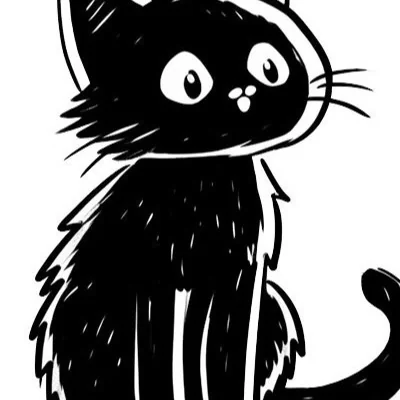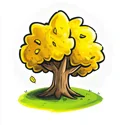How to Draw a Tree in 5 Easy Steps
Learn how to draw a tree in 5 easy steps with this step-by-step tutorial. Perfect for artists of all skill levels!

Materials You'll Need
- Pencil
- Paper
- Eraser
- Pen
- Paint
How to Draw a Tree in 5 Easy Steps

Drawing a tree is one of the most enjoyable and rewarding artistic exercises, allowing you to bring the beauty and tranquility of nature to life on paper. Trees, with their towering trunks, intricate branches, and lush canopies, offer endless possibilities for creativity and expression. Whether you're sketching a simple tree or crafting a detailed masterpiece, each tree tells its own story.
In this tutorial, we'll break the process of how to draw a tree down into clear, easy-to-follow steps, guiding you through everything from sketching the trunk to adding branches, leaves, and textures. With practice and a touch of patience, you'll learn how to create a beautiful and realistic tree drawing that captures the elegance and diversity of these natural wonders.
So grab your pencils, find inspiration from the world around you, and let's get started on drawing a tree that will make your artwork flourish!
Materials Required
-
Eraser
-
Drawing paper
How to Draw a Tree Step-by-Step
Step 1: Start with the Basic Shapes
Begin by sketching the foundation of your tree. Draw a large oval or cloud-like shape at the top of your paper to represent the crown of the tree. Below it, sketch a long, vertical oval or rectangle for the trunk. At the base of the trunk, add a smaller oval or irregular shape to represent the root area. These shapes serve as guides to help you establish the overall proportions and structure of your tree. Keep your lines light and easy to erase, as they'll be refined later.
Step 2: Refine the Shapes and Add the Framework
Refine the basic shapes by adding branches and roots. From the trunk, extend thick, sturdy branches that spread outward and upward, connecting to the crown. Vary the direction, thickness, and length of the branches to give your tree a natural look.
Next, draw roots extending from the base of the trunk. Roots can be slightly curved or twisted, radiating outward and disappearing into the ground. These elements create a sense of stability and life in your tree drawing.
Step 3: Sketch the Details
Now it's time to bring your tree to life by adding details.
-
Leaves: For a tree with foliage, sketch clusters of leaves by drawing wavy or jagged lines that follow the outline of the crown. Make some clusters denser and others sparser to create depth and variety. If you prefer a leafless tree, focus on refining the branches and their smaller offshoots, ensuring they taper as they extend outward.
-
Bark Texture: Add texture to the trunk and branches by sketching vertical lines and irregular shapes to represent the bark. Vary the thickness and spacing of the lines to mimic the natural patterns found in tree bark.
-
Ground Details: At the base, add small lines and curves to suggest grass, rocks, or other elements that ground the tree in its environment.
Step 4: Add Shading and Texture
Shading and texture will give your tree depth and dimension:
-
Crown Shading: Identify your light source and shade the areas of the crown that are in shadow. Use soft, curved lines to create a sense of volume within the foliage. Leave some areas lighter to represent highlights where light filters through.
-
Trunk Shading: Apply shading to one side of the trunk to indicate shadows, following the contours of the bark texture you added earlier. Use cross-hatching or smooth blending to achieve a natural look.
-
Branches and Roots: Add subtle shading to the branches and roots, focusing on areas where they overlap or curve away from the light source. This will enhance the three-dimensional quality of your drawing.
Step 5: Add Final Touches
Take a moment to step back and evaluate your tree drawing as a whole. Make any necessary adjustments to balance the composition and ensure the proportions feel natural. Add finishing details such as:
-
Extra Leaves: Fill in any sparse areas with additional leaves or adjust the density of your foliage.
-
Highlights: Use an eraser or white pencil to add highlights to the trunk, branches, and crown for a polished, dynamic effect.
-
Surrounding Elements: If desired, add background elements like a hill, clouds, or a setting sun to enhance your tree's environment.
Wrapping Up: Your Tree Drawing is Complete! ✨
Congratulations! You've successfully created a detailed and lifelike tree. From its sturdy trunk to its vibrant crown, your tree reflects the beauty and complexity of nature.
Drawing trees is a versatile and rewarding skill that opens up endless possibilities for creating landscapes, forests, or even whimsical tree designs. Keep practicing, experiment with different species and styles, and explore how your trees can enhance larger compositions. With patience and creativity, your art will continue to grow, branch by branch!
Now you can start practicing drawing specific trees, such as the willow tree, or trees in various states, like a dead tree. Or include some cute tree-dwelling creatures, such as the squirrel.
Tip: To create a more realistic tree drawing, focus on the texture of the bark and leaves as you progress through your steps. Start by lightly sketching the trunk with a pencil, using short, uneven strokes to mimic the natural imperfections of tree bark. When adding branches, vary their thickness and angle to reflect the organic growth patterns found in nature.
For the leaves, consider using a stippling technique or gentle, flicking motions with your pencil to create a sense of depth and movement. Finally, don't shy away from layering your pencil strokes; building up darker shades in the crevices and lighter tones on the surfaces will give your tree a three-dimensional quality. Remember, practice makes perfect, so embrace each attempt as a step toward mastering your tree drawing!
Gallery of Tree Drawings





Fun Facts About Trees
-
Trees are some of the oldest living organisms on Earth, with some bristlecone pines living for over 5,000 years.
-
There are more than 60,000 species of trees worldwide, each with unique characteristics and adaptations.
-
Trees release oxygen and absorb carbon dioxide, playing a critical role in maintaining air quality and environmental balance.
-
The tallest tree in the world is a coast redwood named Hyperion, standing at a height of over 379 feet.
-
Some types of trees, like eucalyptus, can survive wildfires due to their fire-resistant bark and the ability to resprout after a fire.
-
The rings inside a tree trunk can tell a story of the tree's life, indicating its age and the climatic conditions it has experienced.
-
Trees communicate with each other through mycorrhizal networks, sometimes referred to as the ""wood wide web.""
-
Bamboo, although technically a grass, is sometimes classified with trees due to its woody stems and tree-like appearance.
-
Trees not only provide shelter and food for countless animal species but also offer resources like medicine and raw materials for humans.
-
The world's largest tree by volume is the General Sherman, a giant sequoia located in California's Sequoia National Park.
Tree Draw Battle
Two of our community artists compete to see who can draw the better tree. Who do you think won the battle? Let us know in the comments section below!
Tree Draw Battle
Who drew it better? Cast your vote below!

Kai Nakamura
The Ink Innovator


Oliver Hart
Pencil Picasso

Be the first to vote in this epic Draw Battle!
Two of our community artists compete to see who can draw the better tree. Who do you think won the battle? Let us know in the comments section below!

Kai Nakamura (The Ink Whisperer)
Former manga artist with a zen-like focus, Kai channels precision and flow into each stroke. His controlled, fluid ink lines seem to come to life on the page.


Oliver Hart (Pencil Picasso)
Oliver Hart, better known as Pencil Picasso, transforms simple pencil strokes into captivating expressions of modern art. With a keen eye for detail and a passion for innovative design, his work reimagines traditional sketching into dynamic narratives that inspire and delight.

Suggestions for Scenes and Settings for Tree Drawings
-
Mystical Forest: Create a drawing of a dense forest filled with a variety of trees, each with its own character and detail.
-
Mountain Valley: Illustrate trees lining the slopes of a picturesque mountain valley with a gentle stream flowing through.
-
Tropical Jungle: Depict lush tropical trees with vibrant foliage, perhaps including some exotic birds or wildlife.
-
Seaside Grove: Sketch a scene of trees growing along a sandy beach, with waves crashing nearby and a sunset in the background.
-
Autumn Park: Portray a park in autumn, with trees sporting vibrant red and orange leaves, possibly accompanied by people enjoying the scenery.
-
Winter Woodland: Show trees standing in a snowy landscape, their bare branches glistening with ice or snow.
-
Ancient Forest: Draw a scene featuring ancient, gnarled trees with thick trunks and sprawling roots, hinting at the passage of time.
-
Urban Alleyway: Design a tree-lined street in an urban setting, blending nature with city life.
-
Desert Oasis: Create an oasis scene with palm trees providing shade and perhaps a small pond or resting wildlife.
-
Enchanted Grove: Imagine a grove of trees glowing with supernatural colors or lights, giving a magical or otherworldly feel to the scene.
These ideas are just starting points to inspire your creativity when drawing trees in various settings. Enjoy exploring the natural world through your art!